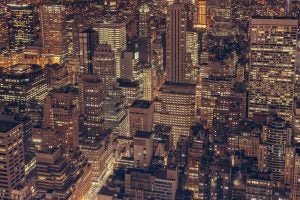 Climate of Hope, United States Climate Alliance … These are a couple of initiatives and organizations formed by individual citizens, cities, and states to fight climate change since the President withdrew the United States from the Paris Agreements. And, I’m proud to say New York City is in on it.
Climate of Hope, United States Climate Alliance … These are a couple of initiatives and organizations formed by individual citizens, cities, and states to fight climate change since the President withdrew the United States from the Paris Agreements. And, I’m proud to say New York City is in on it.
Earlier last month, the New York City Council introduced a package of bills designed to make buildings more energy efficient. Given that about 70 percent of greenhouse gas emissions in the City come from heating and cooling buildings, regulating how buildings manage energy is crucial to reaching Mayor Bill de Blasio’s goal of reducing citywide emissions 80 percent below 2005 levels by 2050.
The bills
Here’s a rundown:
- 1629: Proposes that the mayor’s administration be required to submit recommendations to the Council for a more stringent energy code. Going forward, new construction, or buildings which undergo substantial renovation would be required to comply with these more energy efficient codes.
- 1632: Proposes that property owners be required to disclose information about a building’s energy efficiency at the point of sale.
- 1637: Proposes to establish a city energy policy task force that would be responsible for the creation of a long-term energy plan in 2019 and every four years going forward.
- 1639: Proposes that the city be required to create a plan for encouraging business improvement districts (BIDS) to increase solar energy use.
- 1644: Proposes the establishment of a ‘green project accelerator’, which would be a program within the NYC Dept. of Buildings. This program would simplify and accelerate the retrofitting permit process by answering questions buildings have and making it easier for projects to move forward to the construction phase.
- 1651: Proposes the amendment of the administrative code of the City of New York, in relation to real-time monitoring of energy use and heat loss in city buildings.
What’s missing
While these bills represent an important step in the right direction, there are opportunities to strengthen them so the intended reduction in pollution is more effective and long-lasting. For example, Int. 1644, only refers to only renewable energy projects and distributed energy resource projects and does not make mention of energy efficiency projects, which aim to reduce energy use.
Energy efficiency should be included in the bill to complement clean energy sourcing and encourage projects that will limit energy consumption. Our path to achieving 80×50 goals will greatly benefit from this.
[Tweet “How to pack more power into NYC’s energy-efficiency bill package”]
Slight changes
The other bills on the package are necessary, but some seem to duplicate existing processes.
As it is already required, the city’s energy code goes through review and is upgraded with more stringent standards every three years, which would make Int. 1629 duplicative. Why not improve the existing process to make it more efficient, transparent, and open to public feedback?
Also, while solar is an abundant and important source of renewable energy, Int. 1639 could expand on the renewable technologies that can be used to reduce pollution, such as geothermal or solar-thermal.
It is up to cities and states to do the heavy lifting when it comes to protecting the environment, especially now that the federal government is not engaging in these efforts. The New York City Council’s commitment to making the mayor’s climate goals a reality is commendable, and taking time to enhance this bill package is vital to make progress. EDF looks forward to working with Council Members on this undertaking.









